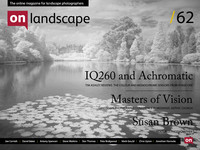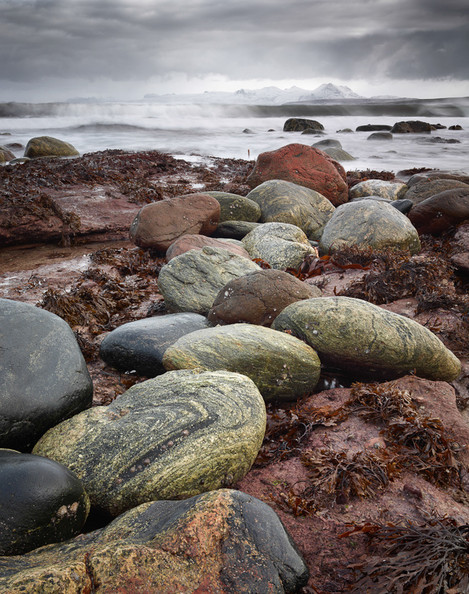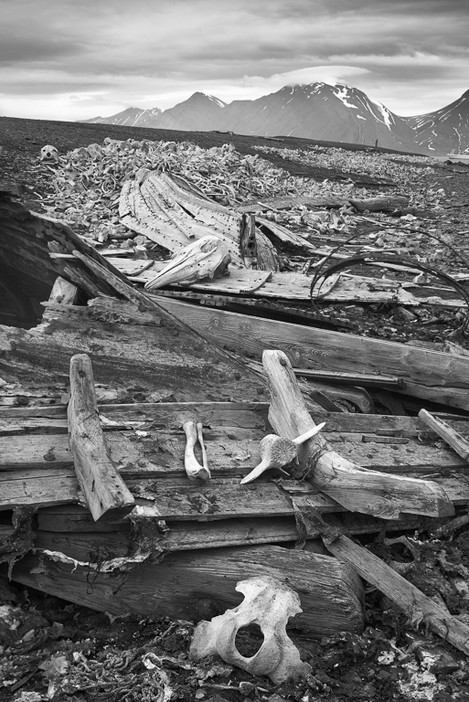Interview

Tim Parkin
Tim Parkin is a British landscape photographer, writer, and editor best known as the co-founder of On Landscape magazine, where he explores the art and practice of photographing the natural world. His work is thoughtful and carefully crafted, often focusing on subtle details and quiet moments in the landscape rather than dramatic vistas. Alongside his photography and writing, he co-founded the Natural Landscape Photography Awards, serves as a judge for other international competitions. Through all these projects, Parkin has become a respected and influential voice in contemporary landscape photography.

Joe Cornish
Professional landscape photographer.
Tim: Hello Joe welcome to on landscape it's great to be here in this magnificent building what you make of it
Joe: it doesn't get much better than this does it really. I love English Gothic/Romanesque architecture and so it's fantastic just to be in such a space.
T: it is for such a small believed to have such a large minister is extraordinary.
J: It is unusual I suppose, the huge drum pillars in the name really kind of set the tone. Southwell may not necessarily be considered the greatest Minstral Cathedral in England but still for such a small place it really holds its own. The interior has a great presence about it and the colours of the stone are really lovely to, a soft warm red colour
T: yes, as you were giving the talk at the start of the exhibition we had the light coming through the stained glass window at the end of the minster. It was rather sublime really
J: Yes it's amazing, fantastic. I feel very fortunate to have been given the opportunity to have been asked to show in there. Of course, now I have give a talk in such a place I’ll be forever spoilt
T: You’ve chosen quite a range of different images from around the world, some of which have been in a couple of small exhibitions, how did you go about choosing your pictures?
J: To be perfectly honest Tim, I can’t afford to just go ahead and frame up a brand new show every time there are eight lovely panels to fill so I have to be pragmatic and I’ve included pictures that have already been in frames. Having said that there are about six brand new ones framed for this show. So it was a mixture of work that has only been seen once before that is in my private collection, in fact none of them come from the gallery’s collection so in that respect they are fairly ‘unseen’ work, and most of it is pretty recent. There are a couple of images that go back a bit further, for instance, the Cornelian Abstractions were shown for the first time in Scarborough back in 2011.
T: Quite a few images from foreign trips too
J: Yes there are representative images from the Ladakh trip I made last summer with my family and also the South African trip to the Drakensburg which I printed and included in a show in Richmond and also the Antarctica images, there are a few from there and finally just the one image from Svalbard. The rest are mainly from Scotland and the Yorkshire Dales
T: Out of your pictures, if you were to choose two that you were particularly happy with, which would they be and could you talk through them?
J: Well I like all of them otherwise I wouldn’t have framed them but there are some I feel much more strongly about than others. The two that I would probably choose to talk about would be the stone sequence at Gruinard bay which has become a favourite, a bit of a slow burner as I actually shot it at the beginning of last year when you and I were up there doing the work for Phase and I knew I really, really liked it. In fact I actually shot it on the very last day of the Open Studio workshop and by then I’d got a good feeling of familiarity with the area and also through the course of a week doing a workshop you kind of build up a certain amount of suspended energy. If you’re looking around helping people in the landscape around you thinking “I’d love to have a go at that” but you can’t because you have a responsibility. And then on the very last dawn towards the end of the session I was happy everybody was OK and enjoying themselves and David was doing a bit of his own work so it seemed like a good moment for me to get my camera out and at that point the light was really, really nice with no direct sunlight; And this is a theme I’ve explored many, many times before but I’ve found a particular arrangement that I really liked, it was the first time I’d seen it and it all came together because of the snowy mountains in the background, which I loved and they’re favourite mountains of mine which I’ve climbed on, Beinn Mhòr Còigich, so I suppose you could say there is history for me personally. Then I figured out I needed to create a contrast between the very strong detail in the rocks and the motion of the water so I needed to use a filter to slow things down a bit, which seemed to work successfully. So when I look at the image it has qualities that gave me a direction subsequently with the palette, an enormous amount of detail, but very subtle detail, and so I suppose you could say it is a Dombrovskis inspired image with the soft lighting. It combines both the monumental elements in the landscape that I like with a feeling of motion and slightly mournful lighting that I associate with Scotland. I find I can look at it a lot and still find something to enjoy in it.
T: And the second picture that you have chosen?
J: For the second picture, I’ve chosen an image from a recent trip to Svalbard. I should mention that when I choose images that are a year or more old I think you can judge whether they have worked or not because you are no longer emotionally attached to them so I’m pretty confident that the Gruinard bay image is one that should stand the test of time. The Svalbard image is brand new really, I only shot it a month ago, and I quite like to challenge myself as to what I think will have deeper qualities over time and I felt right from the moment I first looked at this image on the computer having made the image that it had something about it. I think it’s a very, very complicated picture and that is partly why I have chosen to interpret it in black and white. The colours didn’t really seem to me to add very much if anything. They kept things too much on the surface and the whole message of the picture is documentary journalism in nature, a kind of “look at this if you will and ask why is this landscape like this”. It’s obviously not picturesque and at the same time because of my own personal aesthetic I still set myself the goal of creating flow and depth and visual relationships in the picture. I find it quite satisfying on that basis as you can see the remnants of the boat and bits of bone and skull and recognizable elements of the skull in the mid ground ..
T: So this is visual story telling through composition
J: Yes – there is clearly also a literal story to be told here that this is where ancestors of ours came and slaughtered whales on a ridiculous scale. I’m not wanting to skew the interpretation of the image, that is up to the viewer, but I would hope that the image is constructed in such a way that it does encourage you to look at it and ask questions and then maybe reach your own conclusions. I hope that I’ll be able to look back on the image in years to come and think “yeah, that was good and says something”. The image isn’t relying on any special effects, it’s even deliberately got our ship in the background as a self referential note. I could have cloned it out but I would never do that.
T: You’re not pretending that the photographer is some lone adventurer in a wild place. I would say that is quite a humble approach to photography
J: To get the composition I wanted the boat naturally became part of that and I didn’t think “How am I going to get rid of this” I though “Fine, that’s good as it adds another small fragment to the visual story”. And I don’t think I’ve seen too many pictures really like this.
T: In a documentary sense the typical picture that would come back from somewhere like this would be quite ‘deadpan’ but you’ve created your own aesthetic through the use of the wonderful set of zig-zag’ing bands that continue all the way to the hills in the background. I’ve read recently that beauty and/or elements of composition needn’t necessarily be the subject of an image but it can be one of a range of tools used to help communicate an idea or to engage with the audience.
J: If you think of Simon Norfolk his images are often quite shocking or about awful subjects but the way he uses lighting and composition to engage the imagination aesthetically and to connect us to the scene and help us take an interest in it are as good an example of someone who uses composition, light and beauty in this way. Essentially without it there is no effective photography. In Simon’s case he uses these ‘tools’ as a kind of shock tactic to render the subject beautifully which has a narrative that is all but beautiful. And this image is the aftermath of slaughter and you might feel disinterested in whales but I certainly do feel very strongly about whales and they are amongst the most spectacular animals on the planet and they are also extraordinarily gentle and innocent in a way, representing a primordial stillness in the oceans. When you see the plunder that we made of them it speaks volumes to me about how utterly ruthless human beings are when the occasion demands. We shouldn’t judge our ancestors really as they only worked within the context of their times but these things are still going on in China and Japan with not only whales but with dolphins and sharks. It’s obviously up to individuals to decide whether this is better or worse than killing farm animals in abattoirs and so on but I think it’s deeply shocking and it does make us think and stop in our tracks occasionally.
T: We’re asking people who they would like to see as the next Master of Vision. What would your choice be?
J: It’s a really difficult one as I always feel sorry about everyone who is excluded when you pick someone but if we’re talking people with a long track record, David Ward immediately springs to mind but the other possibility would be Hans Strand who is another photographer with a long record of working in the landscape but admittedly he’s not British so perhaps he would disqualify himself on that basis. But then again David might disqualify himself by saying he’s not a landscape photographer! He works in the landscape and in my eyes he is a master photographer without a shadow of a doubt.



